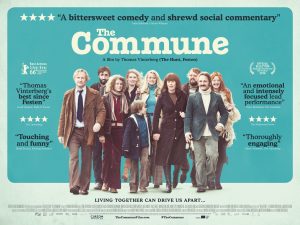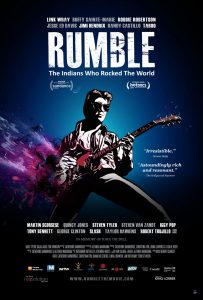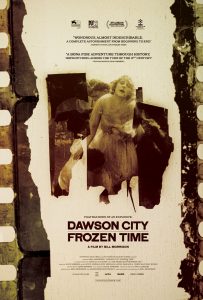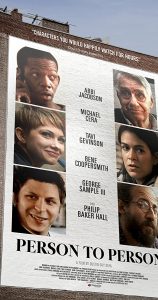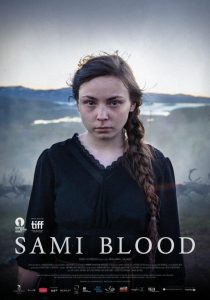Another rousing collection of films screened at Carbon Arc Cinema from the end of September through November. Halifax’s Independent Cinema series will now take a break. We will be back in early February with another collection of international and independent films.
I wasn’t able to see all the screenings this fall—I missed The Midwife, The Teacher, Lost In Paris, and Dina—but here are a few scattered thoughts on what I did see:
The Commune is Thomas Vinterberg’s 2016 drama, loosely autobiographical, about a group of adults (and a couple kids) who choose to live together in a large house in 1970s Copenhagen, when these kinds of social experiments were all the rage. I really like a lot of Vinterberg’s work, especially The Celebration and The Hunt—he’s really interested in ways the social contract can break down due to inappropriate or unexpected intimacies. Here, one party of the central couple who started this commune embarks on an affair, and then invites the new lover into the house. I enjoyed the first half of the film especially, as the ensemble of characters manage this new living situation in funny and awkward ways. The second half suffers a bit from a change of tone that, while an effective dramatic individual character study, diminishes the charmingly light touch and the focus on the group dynamic.
Catherine Bainbridge’s Rumble: The Indians Who Rocked The World, explored the lives and work of the many indigenous musicians who contributed to the canon of rock and roll music. It turns out there were many more talents with aboriginal roots than just Link Wray and Robbie Robertson, working in bands and as solo artists.
Dawson City: Frozen Time tells the story of the discovery of boxes of rare film found buried in the northern permafrost. It’s both a look at the boom-to-bust, gold-rush town and of the beginnings of cinema itself, with an compulsively hypnotic score. The dozens of clips from the various features and shorts made in the early 20th Century are fascinating, though director Bill Morrison chooses to show them out of sequence, so it’s hard to get a sense of their narrative. It still feels like we’re witnessing a miracle, the unveiling of lost treasure.
Dustin Guy Defa’s Person To Person is a loose, day-in-the-life, street-level story of intersecting characters in Brooklyn. It’s slight, but it’s got charm to spare—I love the energy of shot-on-location, independent guerrilla-filmmaking in New York City. The film may have been shot on weekends it’s so loose, but boasts vivid characters brought to life by a nice mix of non-professional and seasoned actors. You’ll probably recognize Michael Cera, Abbi Jacobson, Isiah Whitlock Jr, and Philip Baker Hall in the mix.
Columbus is the first feature by cinema-essayist Kogonada. It’s a gorgeously shot film, where every image feels like a #OnePerfectShot, capitalizing on the modernist architecture of this small city in Indiana. The story is fairly straightforward: An overworked translator, Jin (John Cho), finds himself stuck in Columbus when his architect father, visiting to give a talk, suddenly takes ill. His father has an assistant (Parker Posey), but she can’t stick around, so it’s up to Jin to stand watch by the hospital bedside. It’s the last thing he wants to do, so he wanders around the town, smoking, and meets a local: Casey (Haley Lu Richardson), a teen “architecture nerd.” She’s living with her mother (Michelle Forbes), who she cares for while she tries to figure out her future and flirts with her fellow library worker (Rory Culkin). Kogonada takes great care with the camera, locking it down and only moving to follow his characters on a few occasions, wrapping it all in an immersive sound design heavy on summery insects. It’s thoughtful and lovely, while still noticeably a first film—it’s a little heavy-handed with its formalism and self-consciously art-directed, right to the Twister colours of post-it notes on the office walls. (You’ll know what I mean when you see it.)
What Columbus does is announce a storyteller with a distinct style who understands light and frame and how to let air into his work. It’s exciting, and I can’t wait to see what Kogonada does next.
Dave McCary and Kyle Mooney’s Brigsby Bear aches with a certain kind of self-conscious quirkiness, a film baked in a culture of fan-worship and kids raised on TV. While recognizing that badge, I can’t deny it’s potent sweetness. Mooney plays James, a manboy who was kidnapped and raised in isolation by “parents” who “fed” him on a diet of an imaginary fantasy TV show about a bear who saves the galaxy. When James is reunited with his birth family, all he wants to do is continue the show himself, filming fresh segments with new friends. The idea that a guy whose complete experience of the world via television wouldn’t have massive psychological damage is a little hard to believe—and then he’s wrenched away from his safe little bubble? His extraordinary fearlessness and optimism in the face of real life obstacles is a delight, but I didn’t really buy it.
But this is something of a comedic fable about the healing power of creativity, with solid work from a game cast, including Michaela Watkins, Greg Kinnear, and Clare Danes. It rolls over realism and cynicism with its geeky passion. The film also functions as a love letter to Mark Hamill, who stars as the Brigsby creator, with nods to his prominent role in that other fantasy universe so many of us grew up with, as well as his gifts as a voice-work performer.
As a Canadian, Sami Blood feels remarkably, intensely relevant to where we’re at in 2017. The film is written and directed by Amanda Kernell, a filmmaker descended from both Swedish and Sami, the Scandinavian indigenous people. Inspired by stories from her Sami family, she takes us back to the 1930s, when indigenous children were being educated in state-run boarding schools, abused, and made to feel inferior. Sounds familiar.
The film’s focus is on a teenager, Elle Marja (Lene Cecilia Sparrok), and a younger girl, Njenna (Mia Erika Sparrok). The two girls, who are Sami and sisters in real life, play sisters who are sent to the residential school away from their mother and grandfather. Elle Marja is quickly made to feel ashamed of her heritage. Contrary, strong, and determined, she does what her teacher (Hanna Alström of the two Kingsman movies) says she can’t do—goes to Uppsala in the south in order to start a new life, and finds refuge with a Swedish boy she meets at a party. The story is bookended in the present, where a senior Swedish woman named Christina (Maj-Doris Rimpi) attends a funeral in the north, much to her chagrin.
Sami Blood reached into my chest and broke my heart repeatedly. As a first-time filmmaker, Kernell shows remarkable skill in coaxing naturalistic performances from her largely amateur cast and balancing plot and character. Shot in summer, the film makes the best of those long twilights where the daylight just refuses to fade. And Lene Cecilia Sparrok is remarkable—able to express fear, confusion, real fury and palpable hurt without saying a word.
The response to the film by the Carbon Arc audience was sober but positive. An audience member originally from Australia said she recognized the echoes of the story, too—a common tale of colonial imposition on an existing population, and the deep generational damage it does. Sounds very familiar.






